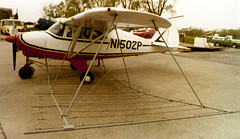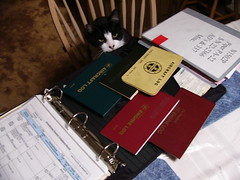An aircraft "annual" is orders of magnitude more involved than what you might have done on a car, with good reason. For starters, there are some fundamental legal matters unique to aircraft maintenance; first, that many of the systems on an airplane may only be worked on by FAA-certified mechanics; and second, that the mechanic who does the work must detail the work in writing, and sign his/her name to the work. Flying airplanes and working on them, then, are two of the last vestiges of personal responsibility in the American legal system.
TML Aircraft is the outfit that did my inspection this year. Mike Lovelace, the proprietor and head mechanic, impressed me with his presentations to the Cherry Ridge Pilots Association and with his thorough knowledge of the regs; and, he has moved his business into a new hangar right at the airport, so I didn't have to ferry the plane anywhere. Since this was his first time doing an annual on my plane, almost a third of his time was spent working not on the aircraft, but on the paperwork.

Mike went through these logbooks in great detail, looking for the more serious matters of compliance with Federal law. There are two varieties of legal items that must be accounted for: ADs and 337s. ADs, Airworthiness Directives, address safety issues that are specific to each type of airplane, and carry the force of law; if they are not complied with, the aircraft is illegal to fly. An FAA Form 337 details any change made to an aircraft that alters it from the design as it was certified; any such modifications must be inspected and approved. These ADs can be expensive, depending on the model of plane; one of the most serious for the Tri-Pacer fleet over the years involved the lift struts, the two steel poles that support each wing (and clutter many of Gail's photos.) The original struts could corrode on the inside, weakening them invisibly. 02P has been refitted with sealed, gas-filled struts as well as new attachment hardware of a thicker size and higher-grade steel.
The strut AD, and 51 years' worth of other improvements to 1502P are now listed on four computer-printed pages, in the fancy zippered binder that TML provided me with. Mike's computer system will provide reminders of when recurring inspections are due, and make next year's checkup easier.

